Annette Gendler's Blog, page 16
July 19, 2017
My Book and I in Jerusalem

My book and I just had the great fortune of spending time in Jerusalem. For me it was an “again,” and, while my book per se had not been to the City of Gold before, some of its content does take place there, almost 30 years ago!
In Jerusalem I took Hebrew classes (again!) for two weeks, and on my way to Ulpan (Hebrew school), I passed by the Reading Station in the Train Track Park that I noticed two years ago when I was doing the same thing. This time it was a thrill to actually contribute a...
June 12, 2017
Snail Mail Art

I adore snail mail art. As a kid, I loved to draw. That pastime, along with several others, has remained in my childhood. Over the past few years, however, I’ve noticed that drawn illustrations always catch my eye, more so than photographs, perhaps because we live in such a photographically saturated world. I fell in love with Naomi Bulger‘s work a few years ago, in particular her mail art. Sadly, letter writing is another pursuit of my younger years that has fallen by the wayside, and so I am fascinated by people who still consistently make the effort that I, only very occasionally, manage to pull off these days, namely to mail something tangible with my handwriting on it.
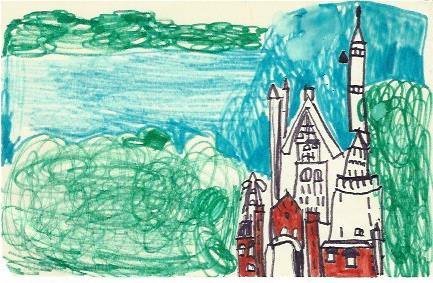
A drawing of the Neuschwanstein castle by yours truly at age five
Busy as I am with book publicity, I simply don’t have the brain space and time right now to possibly recultivate an old hobby but, when Naomi’s “Meals in the Mail” project landed in my inbox, I thought, I’ll participate in that, and I’ll be damned if I don’t manage to include a drawing. I decided to send her the recipe of my grandmother’s hazelnut torte that is in the book (that way it fits into all my book publicity work as well). After pilfering my son’s stash of colored pencils, I trained my eyes on a photograph of the cake and voila, as you can see, a drawing does grace the envelope of my mail for Naomi. I do love sending handwritten mail. and I love receiving it. Making my right hand reproduce, via pen and paper, what I see before me, was a thrilling challenge. So, somehow (somehow!), I must find a way to make space in my life for this fun pursuit.
The post Snail Mail Art appeared first on Annette Gendler.
May 21, 2017
Book Companion Post: Filling in the Blanks on Family History

These past few days I have been able to do what I love best in my writing life: rummage around in family history. I’ve been rewriting an essay that O – The Oprah Magazine has expressed an interest in. It’s about the visit my sister and I paid to our great-great-grandparents’ former mill in the Czech countryside last September. To give it more depth, I had to go back in time and see if my grandmother’s handwritten memoirs (sadly, there are only 14 pages) would tell me more about the people that lived there and her adventures when she spent summers at the mill. More about that hopefully soon, if I can make that essay work!
But since I’ve been on that journey it’s only fitting that my guest post on Rivka’s Yiddish was published yesterday:
Filling in the Blanks on my Jewish Family History
A big thank you to Rivka for hosting me, and also for nudging me to write about the research I undertook in order to write Jumping Over Shadows. Initially I balked at writing about that because I did hit upon a possible family secret that I did not want to divulge–it is, I believe, one if the payoffs of reading Jumping Over Shadows. But, once I put my mind to it, I found that the process of putting it all together, namely the written family stories, the oral history, as well as finding relevant history books, going into archives, and traveling to the sites, made a good story in and of itself. So, please head on over to Rivka’s Yiddish!
The post Book Companion Post: Filling in the Blanks on Family History appeared first on Annette Gendler.
May 10, 2017
The Flying Dutchman Comes Home

Train station in Liberec (formerly Reichenberg) – the train in “The Flying Dutchman” left from here
I owe the metaphor of the Flying Dutchman, title of one of the pivotal chapters in Jumping Over Shadows, to my grandfather, who’s also the protagonist of that story. In his letter to friends that described what had happened to the family from May 1945 to May 1946, he likened their arrival at some godforsaken train station during a stormy night to “the first act in The Flying Dutchman.” The scene reminded him of Wagner’s opera, when the doomed ship, condemned to sail the oceans for eternity, finds shelter from a storm in a Norwegian fjord.
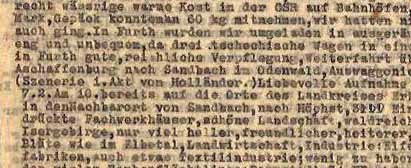
A snippet from my grandfather’s original letter–in line 7 from the top, it reads, in parenthesis, “Szenerie 1. Akt vom Holländer” (scenery, first act of the Dutchman)
Eerily, the story I fashioned from my grandfather’s letter and titled “The Flying Dutchman,” and which I read at my MFA graduation ceremony ten years ago, suffered a similar fate. When David Payne, an acclaimed novelist and member of the fiction faculty back then, told me, after my reading, that I had a “compelling story”–I thought I had the endorsement for success, particularly because he had not worked with me and had no reason to compliment my work. Alas, the Flying Dutchman was the Flying Dutchman and was doomed not to find a home. Over the past ten years, I submitted it 75 times and got 75 rejections (I keep good records.) At the height of my submission fervor, in 2011, I submitted it 23 times.) Some were close calls, with the literary magazine editors asking whether this was memoir/nonfiction and then still rejecting it, ostensibly because a memoir written in third person is too unusual. Whatever the reason, the Flying Dutchman sailed from one literary magazine to another and never found a harbor.
By February of this year, my book was well on its way to publication, and the Flying Dutchman was comfortably nestled in the middle of it, among other chapters. Then I published my essay “The Year I Gave Up Submitting to Literary Magazines” on booksbywomen.org. The thrust of the essay was not so much to voice my frustration but to discuss the fact that very often, we chase after something that just doesn’t work, while a much more fruitful path has already opened for us. In my case, it was realizing that literary magazines were not where my writing was finding a home, while more mainstream media was regularly publishing my work. It was about shifting my paradigm.
Four days after that essay appeared (I got a lot of comments and interaction with readers on it), I received an email from the editor of the Lascaux Review, asking me to please consider submitting something. The poet April Ford had forwarded it to him (thank you, April!) and he was intrigued. So, a few days later, I sent him the Flying Dutchman. Incidentally, the Lascaux Review had not been among the 75 publications that had rejected it before.
Then I heard nothing. Ah, I thought, par for the course. Or, I wondered, had I been taken for a ride? No matter, the book launch was imminent, and I had no time to chase this submission. But, miracles do happen! Last Friday the editor sent me another nice email, apologizing for the delay, and telling me he loved the story and just published it because he didn’t want to delay any longer.
So, after ten years of riding the stormy submissions seas and being turned away at 75 ports, the Flying Dutchman has anchored and has become the standalone story I always believed it could be: See The Flying Dutchman in the Lascaux Review. Oh, and last but not least–the Lascaux Review is one of the rare literary magazines that pays contributors, so I got a little something out if it, too. Not a way to make a living, that’s for sure, but at least to get some satisfaction.
The post The Flying Dutchman Comes Home appeared first on Annette Gendler.
May 1, 2017
Jerusalem: Beit Nechemia
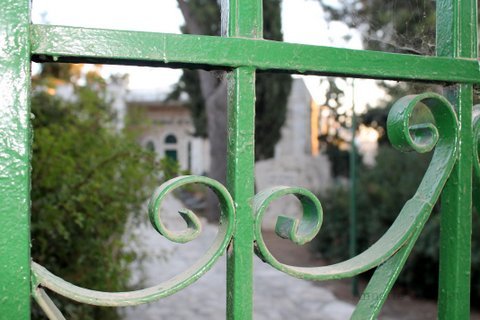
Today is Yom HaZikaron, the day Israel remembers its fallen soldiers. As the mother of two IDF soldiers (My daughter wrapped up her service last year; my son is still serving.), this day fills me with apprehension as well as pride. So, to honor Yom HaZikaron, I offer you this little photo essay of Beit Nechemia, a youth center in the Jerusalem neighborhood of Abu Tor, dedicated in memory of paratrooper Nechemia Cohen, who fell during the Six Day War in 1967. Unbelievably, this is now 50 years ago.
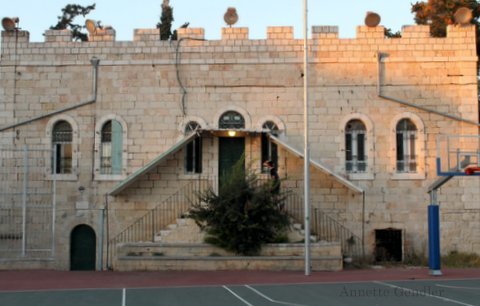
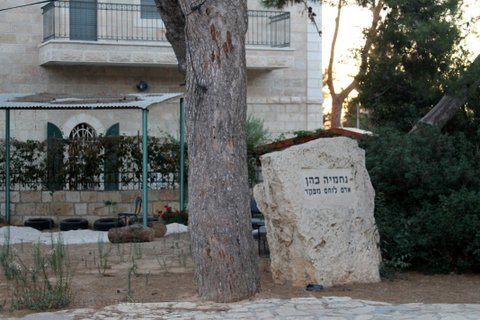

I learned about his story in Steven Pressfield’s excellent book The Lion’s Gate-On the Front Lines of the Six Day War. I could never do the story justice, so I won’t retell it here. Suffice it to say that the area where this house stands was no-man’s land before the Six Day War broke out, as the wall that separated Jerusalem into east and west was running right by here, and Nechemia Cohen served on a guard post on this hill. His friends and family later bought this house and dedicated it in his name. It’s a beautiful old house, but it’s also ramshackle–the shopping cart, the plastic chair, the scruffy grounds.
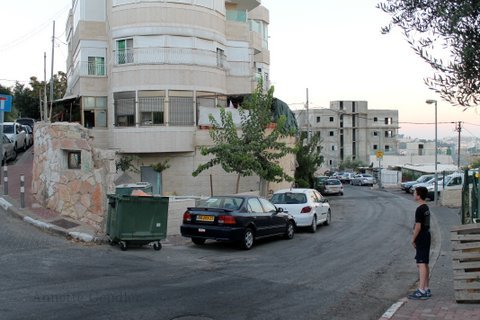
This is where the wall used to be, you can still see the seam in the asphalt.

View over East Jerusalem from Abu Tor.
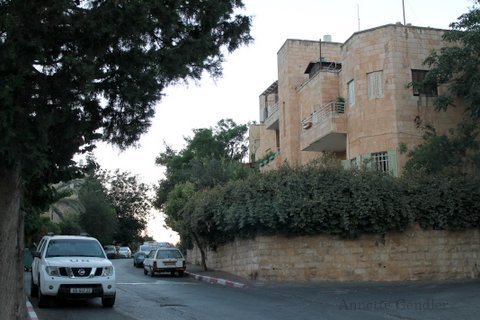
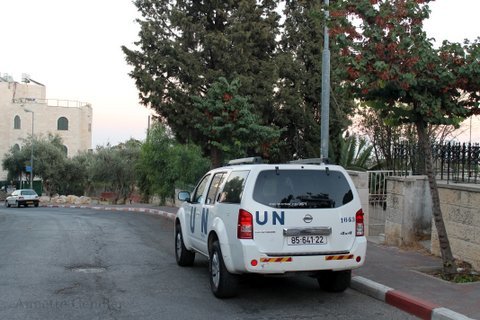
As is the custom in the so-called border areas, you’ll see UN cars.

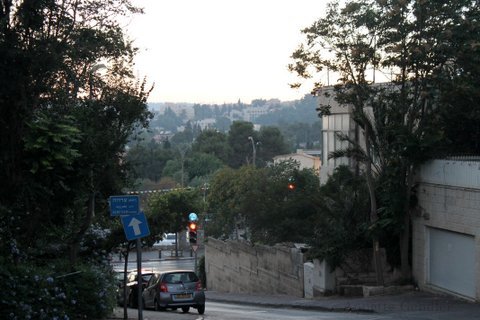
Nevertheless, Abu Tor is a beautiful old Jerusalem neighborhood, and I quite enjoyed living around the corner from this spot, off to the left along Derech Chevron (Hebron Road).
PS: The epilogue of my memoir Jumping Over Shadows tells the story of my daughter joining the IDF during Israel’s most recent war and was excerpted in Tablet Magazine: An American Mother Visits Israel on a Mission
The post Jerusalem: Beit Nechemia appeared first on Annette Gendler.
April 24, 2017
Book Companion Post – Chapter: Surberg Concentration Camp Memorial

Today is Yom HaShoa, Holocaust Remembrance Day, commemorated by Jewish communities and individuals worldwide. In Israel, the most remarkable feature of the day is the siren that sounds at sundown (when the day officially begins), and again at 11 a.m., when the entire country comes to standstill for two minutes of silent devotion. The same, by the way, happens on Yom HaZikaron, Israel’s Memorial Day, when Israel remembers its fallen soldiers. I always thought this a most impressive ritual, and I wish we would pay our veterans in the U.S. the same kind of respect and honor.
My contribution in honor of Yom HaShoa is this little photo essay of the concentration camp memorial at Surberg, Germany, featured in the chapter “Surberg” in Jumping Over Shadows. My brother visited there this Friday (he lives not too far away), and he took these photos for me. I’ll pair the images with quotes from the chapter.



“One time, after meeting Harry’s Viennese friend in Salzburg, we were driving back to Munich. We left the congested Autobahn and traveled along the two-lane state road. Not far past the Austrian border, we passed a sign by the side of the road that read KZ FRIEDHOF, concentration camp cemetery.” p. 58, Jumping Over Shadows (Note: These days the sign reads “KZ Gedenkstätte,” which means “concentration camp memorial.”)

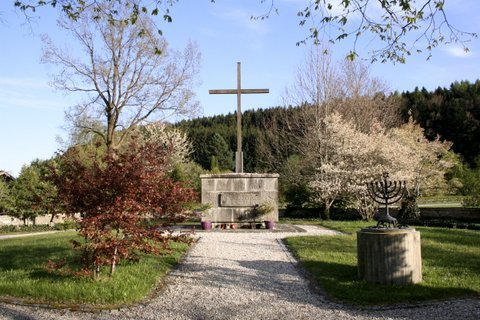
“We had not been aware of a concentration camp in this area, but then again, there had been so many small camps all over the German Reich, little places of horror outdone by the unbelievable death factory of Auschwitz. We followed the sign and came upon a small cemetery centered on a stone altar with a towering black cross.” p. 58
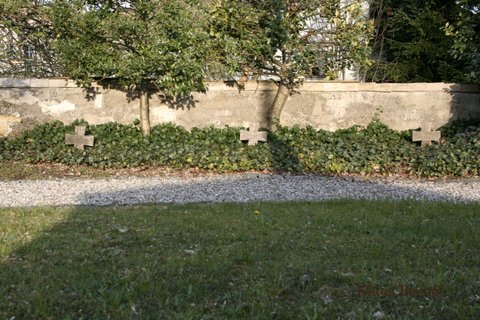

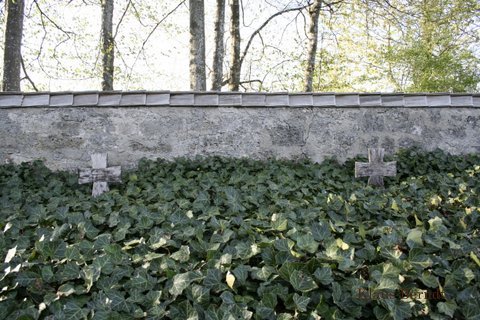
“Wooden crosses, barely knee-high, poked out from the bushes and trees that surrounded the grassy area around the cross.” p. 58
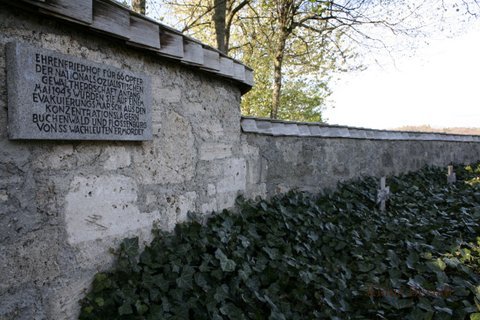

“Set back from this arrangement was a wide, low-set house, and beyond it a church. A nun approached as we got out of the car. We asked what had happened here, and she told us that shortly before the Nazi surrender, one of the death marches from the dissolved concentration camps of Buchenwald and Flossenbürg had reached this area, called Surberg. One morning, as US troops were approaching, the accompanying guards fulfilled their last order and shot the sixty-some former concentration camp prisoners, before dumping their guns and uniforms and fleeing.” p. 58
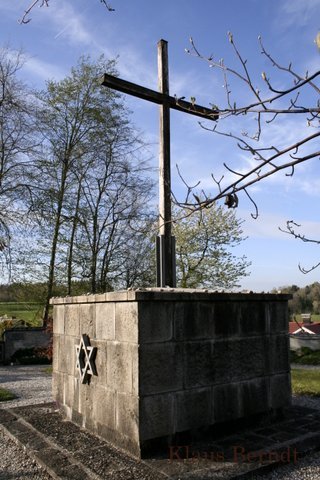
“‘Weren’t most of the victims Jewish?’ Harry asked.
‘Oh, yes,’ the nun answered.
‘Why, then, is there a big cross on the grave?’
She looked stratled and said, “We do have Jewish symbols as well, you see.'” p. 58
We went back and forth with the nun for a while on the issue of crosses on Jewish graves but alas, it was not an argument we were going to win. Thirty years later, as my brother’s pictures from last Friday show, the crosses are still there. The whole cemetery is, he says, in good repair. So it leaves us, as it did back then, with the question: Is it better to have a memorial with inappropriate crosses, rather than no memorial at all?
The post Book Companion Post – Chapter: Surberg Concentration Camp Memorial appeared first on Annette Gendler.
April 16, 2017
Book Companion Post – Chapter: Israel – At the Church of the Holy Sepulchre
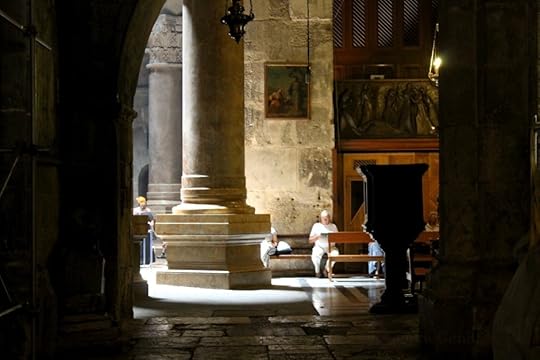
In time for Easter, my essay “At the Church of the Holy Sepulchre” appeared on Jerusalem Moments. With it, I thought I’d share a few photos from and around this church, with which I have made more of a peace since that very first visit, retold in this excerpt from Jumping Over Shadows.

I pretty much visit the Church of the Holy Sepulchre every time I’m in the Old City of Jerusalem because in one of the alleyways leading to it there is the store where I always buy incense for my Coptic Ethiopian friends here in Chicago.

In the winter of 2014, on my first visit back to the church after the one detailed in the essay, it was one of these colorfully dressed pilgrims from Nigeria who, inside the church, kindly explained to my daughter and me what was what.
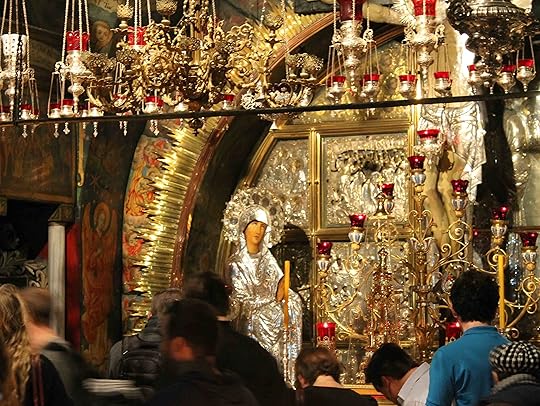
This is the altar described at the end of the essay.


People in line to see Jesus’ final resting place.

As you can see, none of the white light streaming in through the dome’s windows really makes it down into the church, and there are no windows at “ground” level.
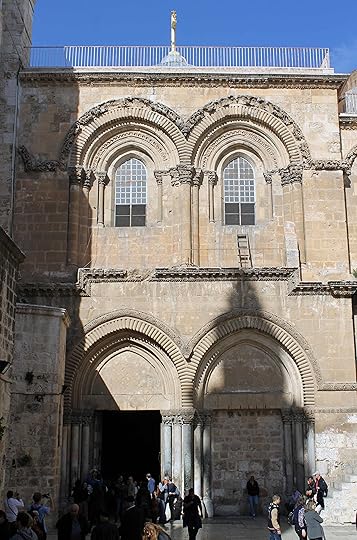
The facade of the Church of the Holy Sepulchre – this is as much as you’re going to get in case you’re looking for a grand entrance like I was. It’s the only part of the church that’s free standing.
The post Book Companion Post – Chapter: Israel – At the Church of the Holy Sepulchre appeared first on Annette Gendler.
April 11, 2017
Book Companion Post – Chapter: Haselnusstorte (or: A Flourless Hazelnut Torte for Passover)
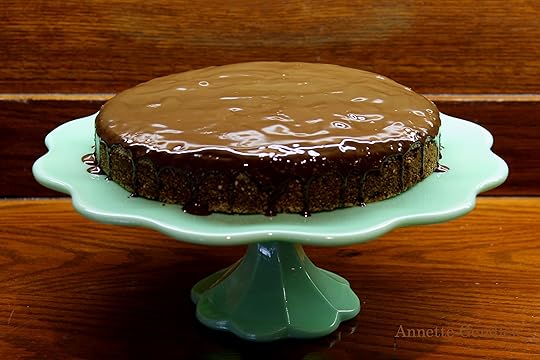
“The next time we visited her, a hazelnut torte would be waiting on her kitchen counter, glazed in glistening dark chocolate.”
Story and recipe on page 166 of Jumping Over Shadows – A Memoir
This chapter was also excerpted in Tablet Magazine, see A Kosher for Passover Hazelnute Torte.
I’m going out of chapter order with today’s book companion post but it fits so perfectly for the first day of Passover! I’ll also keep it short because I am preparing this post in between cooking and setting the table for the first Seder.
Wishing all my Jewish friends and readers a Happy Passover!
The post Book Companion Post – Chapter: Haselnusstorte (or: A Flourless Hazelnut Torte for Passover) appeared first on Annette Gendler.
April 6, 2017
In Defense of the Small Seder
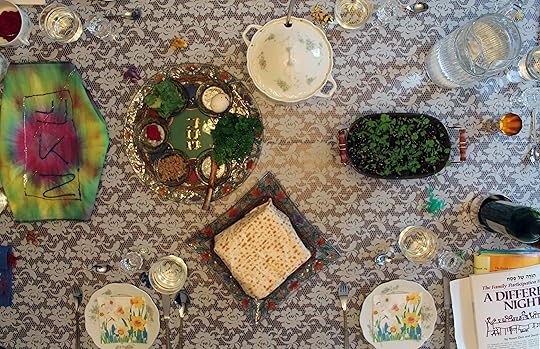
“So how many people are you having?” – For sure I am going to be asked this question today when I chat about Seder preparations with my coworkers. Read about how I deal with it in my new essay in The Forward: In Defense of the Little Seder.
I know this phenomenon applies to other, even non-Jewish holidays as well! Come to think of it, I get asked the same question when Thanksgiving rolls around…
In the meantime, once today’s book launch party is behind me, I’ll be in the kitchen!
Happy Passover!
The post In Defense of the Small Seder appeared first on Annette Gendler.
April 4, 2017
Book Companion Post – Chapter: Fait Accompli I – My Grandfather’s Staircase

Today is the publication date of my memoir Jumping Over Shadows! Hurray! And thus I offer you my very first book companion post, a series I plan to run every Tuesday until I am out of background material and behind-the-book stories to share with you. I will title them according to which chapter in the book they’re accompanying, going, more or less, in chronological order. I’m beginning with the second chapter, Fait Accompli I. I will be reading from it at my book launch party this coming Thursday, April 6, at the Book Cellar, 4736 N. Lincoln Ave in Chicago–so if you’re coming, you’ll already have some images of the setting in your mind:
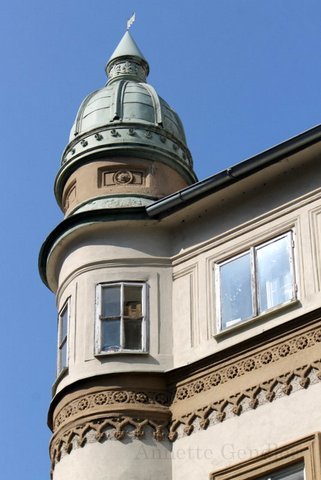
I think of the second half of the Fait Accompli chapter as “Queen of the Night” because it tells of my grandfather growing cacti on the windowsills of this turret. Sure enough, the current occupants are still growing plants there!

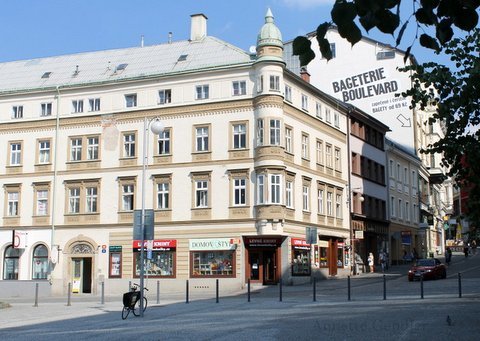
Every time I visited my grandparents’ former hometown of Reichenberg, now called Liberec, in the Czech Republic, I stopped by the building on the square that used to be called Tuchplatz, where my grandfather used to live on the top floor, but I never stepped inside. This past September, when I traveled there with my sister, I did. As you can see in this photo of the building, the door (just to the left of the black bicycle in the foreground) stood open on that sunny day, inviting us in.
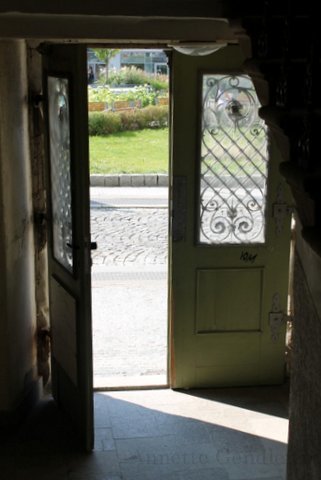
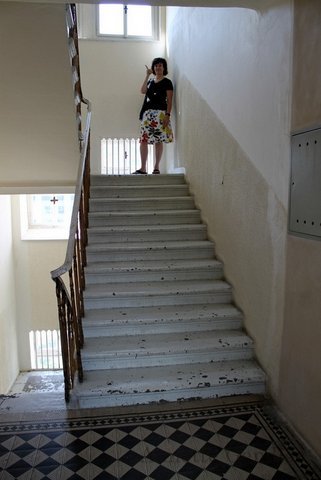
How many times did my grandfather climb up and down these very stairs?
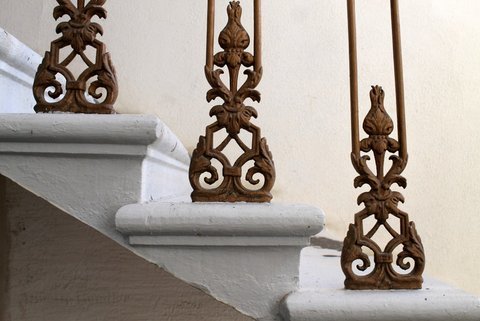
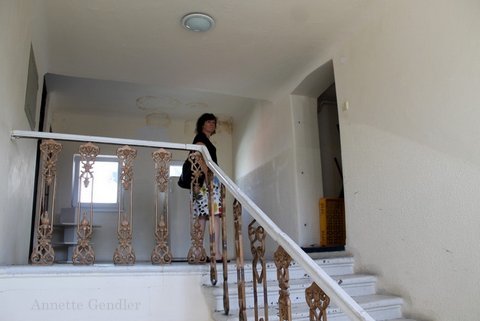
I’m standing right in front of my grandfather’s former doorway! It was an eerie feeling, and I had a strong urge to press the buzzer while at the same time feeling like I was intruding.
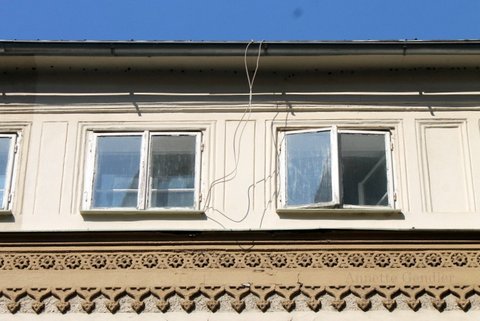
Notice the low ceiling? I remember my grandmother, who joined him living here for the first years of their marriage, telling me about the low ceilings and the long climb upstairs. These could be the windows of the “Stube,” their living room, also featured in the chapter.
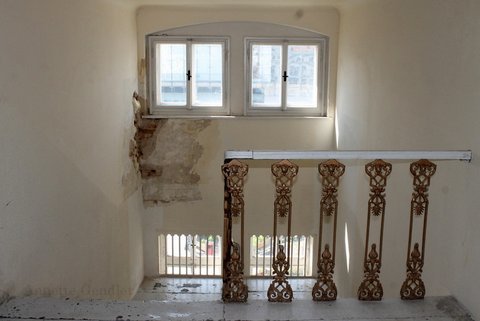
Sadly, the building is in terrible disrepair.

On all my visits, I’ve loved the contrast between the ornate building where my grandfather used to live, and the modern building of the Bata shoe store next to it. Of course, in my grandfather’s times the view was quite different.
The post Book Companion Post – Chapter: Fait Accompli I – My Grandfather’s Staircase appeared first on Annette Gendler.



